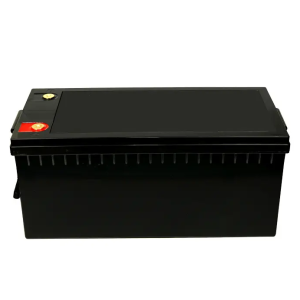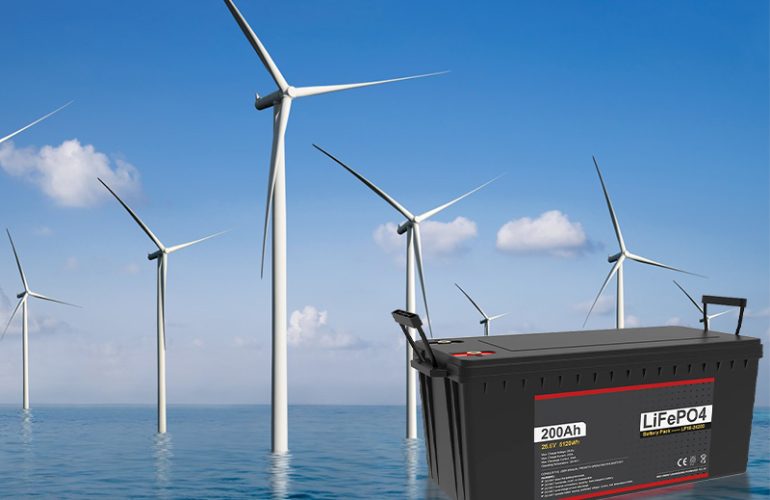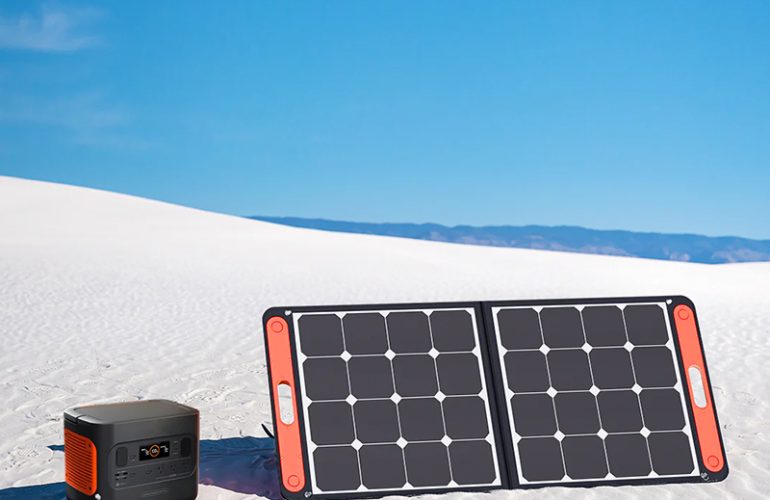Marine lithium battery have revolutionized the boating industry by providing a reliable and efficient power source for various applications. These battery utilize advanced lithium-ion technology, offering significant advantages over traditional lead-acid battery.
Best 48V Marine Lithium Battery:
-
Sale!
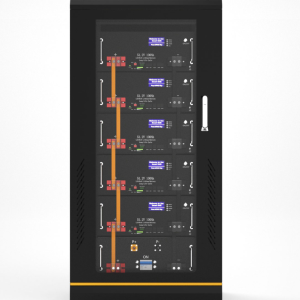
48V Lithium Battery 500Ah
$5,479.00Original price was: $5,479.00.$5,438.00Current price is: $5,438.00. Enquiry -
Sale!
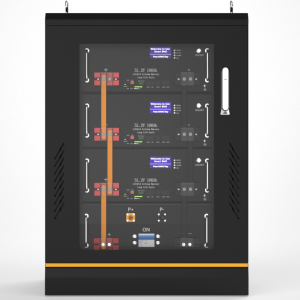
48V Lithium Battery 300Ah
$2,389.00Original price was: $2,389.00.$2,356.00Current price is: $2,356.00. Enquiry -
Sale!
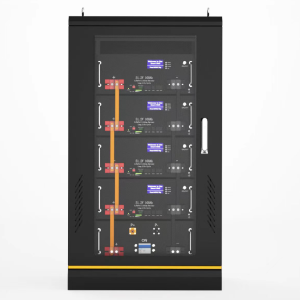
48V Lithium Battery 400AH
$462.00Original price was: $462.00.$423.00Current price is: $423.00. Enquiry -
Sale!
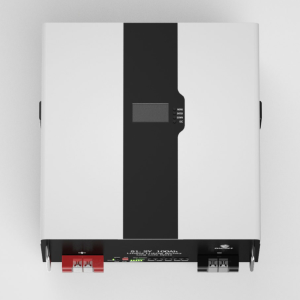
48V 100AH Wall Mounted Lithium Battery
$1,789.00Original price was: $1,789.00.$1,689.00Current price is: $1,689.00. Enquiry -
Sale!
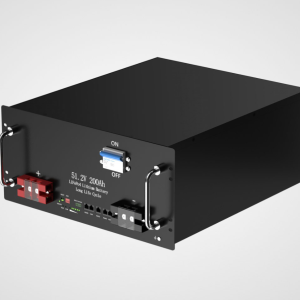
48V Lithium Battery 200AH
$635.00Original price was: $635.00.$612.00Current price is: $612.00. Enquiry -
Sale!
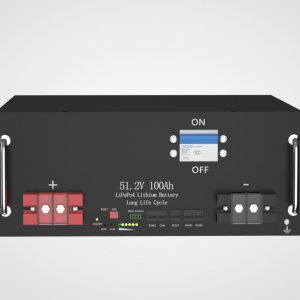
48V Lithium Battery 100Ah
$563.00Original price was: $563.00.$498.00Current price is: $498.00. Enquiry
12V Lithium Marine Battery
-
Sale!

12V 150Ah Lithium Battery
$689.00Original price was: $689.00.$356.00Current price is: $356.00. Enquiry -
Sale!

12V 100Ah Lithium Battery
$235.00Original price was: $235.00.$229.00Current price is: $229.00. Enquiry -
Sale!
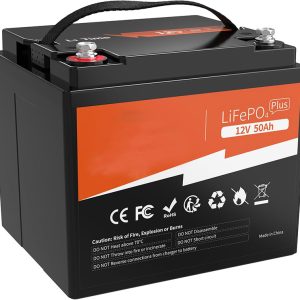
12V 50Ah Deep Cycle Lithium Battery
$335.00Original price was: $335.00.$298.00Current price is: $298.00. Enquiry -
Sale!
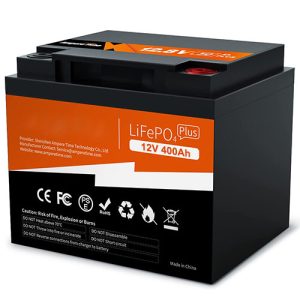
12V 400AH Deep Cycle Lithium ion Battery
$989.00Original price was: $989.00.$958.00Current price is: $958.00. Enquiry -
Sale!

12V 300Ah Lithium ion Battery
$899.00Original price was: $899.00.$599.00Current price is: $599.00. Enquiry -
Sale!

12v 200ah lithium ion battery
$235.00Original price was: $235.00.$198.00Current price is: $198.00. Enquiry
24V Lithium Marine Battery
-
Sale!
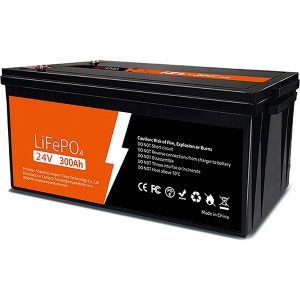
24V 300AH Lithium Ion Battery
$1,387.00Original price was: $1,387.00.$1,359.00Current price is: $1,359.00. Enquiry -
Sale!
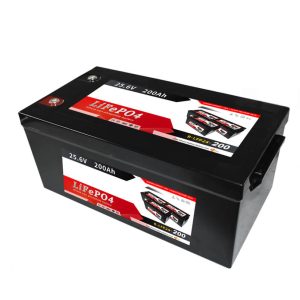
24V 200AH Deep Cycle Lithium Battery
$899.00Original price was: $899.00.$879.00Current price is: $879.00. Enquiry -
Sale!
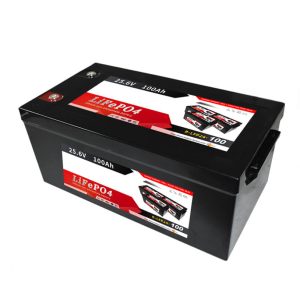
24V 100AH Deep Cycle Lithium Battery
$598.00Original price was: $598.00.$578.00Current price is: $578.00. Enquiry
36V Lithium Marine Battery
What Are Marine Lithium battery?
For years, the most dominant battery unit for maritime vessels of all kinds was the standard lead-acid battery. But recently, lithium-ion battery have become much more prevalent among boaters and are quickly becoming the favored choice for boat owners. A lithium battery is different than the typical lead-acid unit that has been most common in boats for decades and offers many valuable advantages over its counterparts.
Best lithium marine battery
What is Special About a Marine Battery for a Boat?
Your car battery’s job is to provide enough power to turn over, or start, your engine when it is cold. To do this, the battery needs to deliver a lot of amperage for just a few seconds. After the engine starts, the alternator takes over to power all of the electronics in your car and recharge the battery.
Boat battery often have different demands on them. Your boat motor still needs a battery to start it, but there may be many other power needs that the battery will supply. In smaller, day-use boats, your marine battery must also power the lights, gauges, pumps, and other electronics. On the other hand, fishing boats and live-aboard vessels may require multiple battery types to run household systems or electric motors.
Types of Deep Cycle Boat battery
Lead-Acid Deep Cycle Boat battery
Lead-acid deep-cycle marine battery come in two main varieties: flooded lead-acid (FLA) and absorbent glass mat (AGM).
Flooded lead-acid battery are the most basic type of lead-acid battery. They contain a sulfuric acid solution with lead plates suspended in it. You need to monitor them continually and periodically add water to the battery to keep them operating correctly.
Absorbent glass mat battery are also sometimes referred to as sealed lead-acid battery. As this name implies, the battery are sealed and don’t require the same maintenance as FLA battery. AGM battery also have lead plates in them, but they sit between electrolyte saturated fiberglass sheets.
Pros
Lead-acid battery are the most common and readily available type of deep-cycle battery. Since they are readily available, it’s usually pretty easy to find a replacement if you need one. They also have the lowest upfront cost, which can be enticing to those on a budget.
Lead-acid battery do not have any electronics in them, which allows them to provide a large amount of current. This makes them a good option for starting battery.
Cons
Lead-acid battery have a few major drawbacks. The first is that they require more maintenance than other deep-cycle battery to ensure they remain in peak working condition. While AGM battery don’t need the same maintenance as FLA battery, they cost significantly more without adding any additional capacity.
Deep-cycle lead-acid battery should not be discharged below 50% of their capacity. Doing so will damage them. Additionally, as lead-acid battery discharge, their voltage also drops. Combining these two factors means that you typically only get about half of the rated capacity out of a lead-acid battery.
While deep-cycle lead-acid battery have the lowest initial cost, they also have the shortest lifespan, lasting only 2-5 years. Because of the lead plates, lead-acid battery are very heavy, which is not ideal for boating applications where weight is a vital concern. Lastly, FLA battery are not sealed, so you must install them upright to prevent the acid solution from leaking.
Lithium-Ion Deep Cycle Boat Battery
Lithium-ion deep-cycle battery use lithium salt to store energy instead of sulfuric acid and lead plates. They are relatively new and are still the most expensive type of deep-cycle battery. However, their high upfront cost is often justified by their many advantages, especially in boating applications.
Pros
You can drain lithium-ion deep-cycle marine battery to 80% or more of their capacity without damaging them. Additionally, with the proper charge controller, they charge much faster than lead-acid battery. This combination makes lithium marine battery much more efficient than their lead-acid counterparts.
Lithium-ion battery have an integrated battery management system (BMS) that monitors the battery’s health and eliminates the need for periodic maintenance. The BMS also optimizes charging and discharging across the battery’s cells and ensures the battery is always operating within its safe limits. These features result in the lifespan of a lithium battery being 2-5 times that of a lead-acid battery.
Lithium-ion deep-cycle battery don’t contain heavy lead plates and weigh about half what lead-acid battery of the same capacity do. As we mentioned earlier, this is a massive advantage in a boat where every pound counts.
Cons
The biggest disadvantage of lithium-ion marine battery is their initial upfront cost. However, you often end up saving money in the long run since they usually last at least five times longer than traditional lead-acid battery.
One other thing to consider is that the maximum amperage output of lithium-ion battery is much less than lead-acid battery. This means that lithium-ion battery are not a good option for a starting battery where you need high cranking amps.
Can lithium battery be used for engine starting?
While lithium battery offer superior performance for powering house loads, most are not designed for engine starting. The typical peak current on a standard Flykol battery is 200A and it should not be used for engine starting. Fortunately, Flykol does offer the HP line of Flykol battery that has a peak current of 800A for two seconds. This is one of the only Lithium battery designed and rated for engine starting in the industry. Like other Lithium battery, the Flykol series is also a deep cycle battery making it a true dual-purpose option.
What Battery Ratings to Look For
Starting functions: the amount of power available for cranking a starter is measured several ways.
CCA vs. MCA: The two common power measurements are CCA (Cold Cranking Amps, the number of amps a battery can deliver for 30 seconds at 0°F while maintaining its voltage above 7.2 volts) and MCA (Marine Cranking Amps, similar but measured at 32°F instead of 0°F). The reason that MCA are 20–25% higher than the CCA is because battery work better at higher temperatures.
Reserve Minutes indicate how long a battery can sustain a load of 25 amps before it drops to 10.5 volts. A battery rated at 150 minutes can operate a 25A load for 2 1/2 hours (at 80°F). Starting battery aren’t used to handle loads for long periods, so reserve minutes are less critical.
Size: Engine size, type, and ambient temperature determine what size cranking battery you need. High cranking power (and a larger battery) is required for cold temperatures, diesel engines, or large and high compression gas engines. The first sizing criteria is to meet the minimum CCA (if any) stated by the engine or boat manufacturer. If a Group 24, 550 CCA battery worked well for five years, we’d recommend replacing it with a similar model. If, however, it cranked too slowly or failed after a season or two, we’d suggest that you look for a battery with a higher CCA or MCA rating.
Deep cycle functions: Battery capacity measurements are commonly expressed in Amp-hours (Ah) and Reserve Minutes. Amp-hours measure the total amount of energy that a battery can deliver for 20 hours at a constant rate of discharge before the voltage drops to 10.5 volts. This means that a 200Ah battery can run a 10A load for 20 hours. The reserve minute rating is the number of minutes that a battery can run a 25A load until dropping to 10.5V, just like with starting battery. A Group 27 deep cycle battery with a rating of 180 reserve minutes will run a 25A load for three hours. House loads range from 5A to 25A or more. Amp hours is generally the more relevant measurement for house banks.
Longevity: Battery manufacturers measure longevity by discharging full battery at a temperature of 80°F until their voltage drops to 10.5 volts. The battery are recharged under controlled conditions, and the process is repeated until the battery fails to hold half of its rated capacity. This measurement, called cycle life, shows how many discharge cycles a battery provides over its lifespan. This ability to cycle repeatedly is what differentiates deep cycle battery from starting battery, which can’t withstand more than a few deep discharges before they begin to fail. If nothing else, cycle life provides a baseline for comparing one battery to another.
Tips for Charging Marine Lithium battery
Use the Right Charger
It may seem obvious, but you’d be surprised how often boat owners make this simple mistake with their lithium battery. While it’s not the end of the world to use a regular charger for a lithium battery, a charger specifically designed for lithium battery is always the better option.Lithium battery will charge faster with a lithium charger than a standard one—saving you many hours over the unit’s lifespan.
Pro Tip: If you’ve got multiple lithium battery, consider a bank charger that allows you to charge multiple battery simultaneously instead of one at a time.
Don’t Overcharge
One common mistake many boat owners make with lithium battery is charging them too long. Most lithium-ion battery come with a battery management system that monitors the unit’s state of charge and can turn off when the limit is reached—but boat owners shouldn’t assume the monitor will always work on its own.
If charging for many hours, diligently check the lithium charger and its state and remove the battery when it reaches about 80 percent of its charge. If a lithium battery overcharges, it can create unstable and dangerous conditions that reduce its storage capability and lifespan.
Charge in Comfortable Conditions
As we’ve mentioned, lithium battery don’t like to be too hot or cold, so when charging the units, ensure the conditions are moderate and comfortable. When it’s hot outside, bring the charger indoors to a more climate-controlled environment and away from the sun.The same goes if you’re charging a battery in the winter. Ideally, you should never charge a lithium battery in cold or freezing conditions.
What are the Factors to Consider When Choosing a Marine Battery?
Marine battery are a niche application that has specific requirements. Here are some of the factors you should consider when looking for the best option:
Intended Application
There are various types of marine battery – not interchangeable – as each is designed for a specific purpose. The main applications are:
Cranking battery
Cranking refers to starting the marine vehicle. The battery design supplies a large amount of energy in a short amount of time. In addition, it has thin plates so it can be charged easily by the boat’s alternator. Do not use a starter battery to run the appliances onboard your boat. Doing so will damage it and the appliances onboard.
Deep Cycle battery
A deep-cycle battery supplies a lower amount of energy but for long periods. It can power all the items on the boat. A deep-cycle battery has a significantly longer cycle life than a cranking battery and is designed to supply power for longer. Its thick plates also mean that it charges more slowly.
Dual Purpose battery
These are also called hybrid battery and fulfil the role of starting and deep cycle battery. However, they typically have a limited capacity, which makes them suitable for only small boats. Choosing a dedicated battery for each purpose, cranking or deep cycle, is always the best option for performance, capacity, and lifespan.
Weight
Unlike stationary applications such as home solar panels, boats have strict weight limits. Boaters always opt for lighter equipment, and marine battery are no exception. Check the weight limit for your boat and decide how much of that you can spare for the battery. Fortunately, lithium battery weigh around 30% to 50% less than conventional lead-acid versions.
Durability
Boats are constantly in motion due to the movement of waves in the sea or ocean. So, the battery must be built to withstand the vibrations. Additionally, marine battery are rarely in constant use. They are typically stored for a long time, followed by intense usage for a short time. Prioritise the quality over saving money.
Lifespan
The lifespan of a battery is a crucial factor to consider, especially if you are planning to enjoy your boat in the long run. When comparing the lifespan, check the warranty the company offers. The warranty often indicates the minimum lifespan of a battery in any working condition.
If a battery manufacturer claims a lifespan of 10 years but provides a 2-year warranty, it’s unlikely the battery will last for 10 years. In this regard, Flykol is way ahead of the competition as its battery have a long life and come with a 6-year warranty.
Corrosion Resistance
The ability of a marine battery to resist corrosion is vital due to the saltwater conditions in which it operates. Corroded battery should be disposed of since corrosion can cause fires, explosions, and other hazards. It’s a good idea to keep the terminals lubricated with petroleum jelly since it is the best shield against corrosion.
Maintenance Requirements
Different types of battery vary in how much maintenance they need. For example, lead acid battery need frequent attention, which is why most boat owners avoid them. In contrast, lithium battery require almost no attention.
What Are the Benefits of lithium battery for Marine Applications?
There are several unique advantages that lithium battery bring to the table over other alternatives.
Small and Lightweight
The high energy density of lithium battery makes it possible to provide a high-capacity battery in a smaller size. It also decreases the weight of the battery, making it ideal for marine applications.
High Cycle Life
lithium battery provide upward of 3000 charge/discharge cycles. AGM and alternative lithium marine battery can only provide a cycle life of 1500 to 2500 charge/discharge cycles.
Longer Lifespan
The high charge and discharge cycles directly translate to a longer lifespan. LFP marine battery for boats can easily last between ten to fifteen years. Proper care can make them last even longer.
Depth of Discharge (DoD)
Most battery have a lower discharge limit, after which further discharging will negatively affect the battery life. But the discharge limit for an LFP battery is 0%, without harming it.
High Safety Levels
lithium battery do not emit toxic gases when operating in a boat. So, there is no need to provide venting or any special requirements. In addition, lithium battery pose no fire or explosion risk.
Negligible Maintenance
Companies that manufacture battery often claim their battery as maintenance-free. In reality, no battery doesn’t require some care to maintain it in optimal condition. But lithium battery require the least attention to maintain them operating for many years.
Operation in Freezing Conditions
Many lithium battery come with a Battery Management System (BMS) that heats the battery if the working temperature decreases too much. This makes them suitable for use even in freezing conditions.
Don't forget the following
- Don’t forget safety first.
- Don’t add new electrolyte (acid).
- Don’t use unregulated, high-output battery chargers to charge battery.
- Don’t place your equipment and toys into storage without some type of device to keep the battery charged.
- Don’t disconnect battery cables while the engine is running (your battery acts as a filter).
- Don’t put off recharging battery.
- Don’t add tap water as it may contain minerals that will contaminate the electrolyte.
- Don’t discharge a battery any deeper than you possibly have to.
- Don’t let a battery get hot to the touch and boil violently when charging.
- Don’t mix size and types of battery.
Frequently Asked Questions:
Are marine lithium battery waterproof?
Most marine lithium battery are water-resistant but not entirely waterproof. It is important to protect them from direct water exposure and ensure they are installed in a dry location.
Can I use my existing charger with a marine lithium battery?
It is recommended to use chargers specifically designed for lithium battery, as they have charging algorithms tailored to the battery chemistry and provide optimal charging performance.
What is the lifespan of a marine lithium battery?
Marine lithium battery typically have a lifespan of 8 to 10 years, depending on usage patterns and proper maintenance.
Can marine lithium battery be used in cold temperatures?
Marine lithium battery can operate in cold temperatures, but their performance may be reduced. It is advisable to keep them insulated or use battery heaters in extreme cold conditions.
Can I mix marine lithium battery with lead-acid battery?
It is not recommended to mix different battery chemistries in the same circuit. Different charging and discharging characteristics can lead to imbalanced performance and potential damage to the battery.


